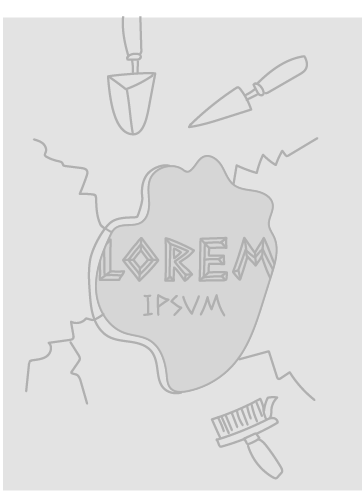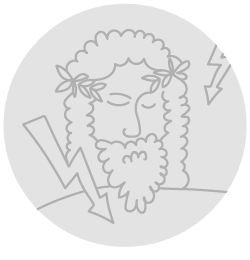Title of the work
Country of the First Edition
Country/countries of popularity
Original Language
First Edition Date
First Edition Details
Henry Lion Oldie, Внук Персея. Книга I: Мой дедушка – Истребитель [Vnuk Perseia. Kniga I: Moi dedushka – Istrebitel']. Moscow: Izdatael'stvo Eksmo-Press, 2011, 416 pp.
ISBN
Genre
Fantasy fiction
Mythological fiction
Myths
Novels
Target Audience
Young adults (15–25)
Cover

We are still trying to obtain permission for posting the original cover.
Author of the Entry:
Zoia Barzakh, Bar-Ilan University, zoia_barzakh@mail.ru
Peer-reviewer of the Entry:
Lisa Maurice, Bar-Ilan University, lisa.maurice@biu.ac.il
Elizabeth Hale, University of New England, ehale@une.edu.au

Henry Lion Oldie
[Dmitry Gromov and Oleg Ladyzhensky] , b. 1990
(Author)
Henry Lion Oldie is the pen name of Ukrainian fantasy fiction writers Dmitry Gromov and Oleg Ladyzhensky. Both authors reside in Kharkiv, Ukraine, and write in Russian.
Dmitry Evgenievich Gromov was born on March 30, 1963 in Simferopol (Crimea, Ukrainian Republic, Soviet Union). In 1969 he moved to Sevastopol (Crimea), and in 1974 – to Kharkiv, where he lives until now. In 1980, after graduating from high school, he enrolled at the Kharkiv Polytechnic Institute. After the Institute he worked as a chemical engineer. He started writing fantasy in 1976, in the age of 13. By the beginning of the 1990th he almost completely left engineering for the sake of literary activity.
His hobbies are hard rock music (he is an author of the first and, to my knowledge, only Russian monograph on the history of “Deep Purple") and karate (II kyu, brown belt).
Gromov is married, has a son (born 1989).
Oleg Semenovich Ladyzhensky was born on March 23, 1963 in Kharkiv. In 1980, after graduating from high school, he enrolled at Kharkiv State Institute of Culture, where he acquired a profession of theater director. Since 1984 he has been working as a director of the Pelican Theater Studio, one of the actors of which is Dmitry Gromov.
Ladyzhensky has a black belt, II dan in karate, and a title of internationally certified referee in martial arts. He is a member of the International Association of National Contact Karate-Do Societies and the senior instructor of Gōjū-ryū school.
Ladyzhensky is married, has a daughter (born 1985).
“The birthday of sir Henry Lion Oldie” is November 13, 1990, when Gromov and Ladyzhensky subscribed the first story they wrote together, “Cinema unto death and…” ("Кино до гроба и…"), by this name. For the last name they took first two letters from each of their names (“Ol” from “Oleg” and “Di” from “Dima”, Russian pet name from “Dmitry”), and the name of Henry the Lion, medieval German prince, served as the first names.
At Eurocon 2006 in Kiev, the European Science Fiction Society named Gromov and Ladyzhansky Europe's best writers of 2006 (see here, accessed: April 23, 2018). Among other awards of Oldie are the Award of Dniestrian Moldovan Republic Writers Guild (1997, for the novel A Hero Must Be Alone), two «Golden caduceus» (award of Kharkiv International Festival of Fantasy “Star Bridge”) for 2000 and 2005 and “Golden Roskon” (award of International Conference on Fantasy and science fiction “Roscon”, held in Moscow) for 2006.
Sources:
oldieworld.com (accessed 02.01.2022)
Azbuka,"Философы от фэнтези: жизнь и миры Генри Лайона Олди", dtf.ru (accessed 02.01.2022)
И. Солунский, "Меч против неба", http://www.fandom.ru/ (accessed 02.01.2022)
Bio prepared by Zoia Barzakh, Bar-Ilan University, zoia_barzakh@mail.ru
Summary
This is a heroic fantasy fiction based on the rare versions of myths of Perseus and Amphitryon, aimed at young adults, in novel format. Prequel to the novel A Hero Must Be Alone, published 17 years before by the same authors. The novel tells about the childhood and youth of Amphitryon and his exploits, preceded the birth of Hercules.
The plot of the first book (My Grandfather Is Exterminator, 2011) evolves around sibling rivalry and ideological confrontation between two sons of Zeus from mortal women: Perseus, the killer of monsters, who wants to remain human, and Dionysus, the founder of an orgiastic cult, who aspires to become a god. Memories of the youth of Perseus are represented by retrospective digressions imitating the structural composition of classical tragedy (they are called parodos and stasima, as tragic choral odes).
Nevertheless, eventually the irreconcilable struggle of Perseus with adepts of the new cult ends in a compromise. Perseus kills his enemy, and Dionysus, who has features of Zagreus, dying and resurrecting deity of mistrial cults, manages to achieve deification through ritual victory over Hades and to take his place in the elite Olympic dozen, squeezing Hestia out of the number.
The book ends by the death of the hero. Andromeda ascend to the funeral pyre with her husband, and both of them become new constellations. Amphitryon, a grandson of Perseus, who is a small child by this time, for the most part of the first book remains a spectator of what is happening.
Analysis
The novel is part of the Achaean Cycle and forms a prequel to the novel A Hero Must Be Alone, published in 1996.
The setting of the novel is Mycenaean Greece. Along with such Mycenaean titles, such as “wanakt” (from Linear B wā-nā-kā, Homeric Fάναξ) , lawaget (from lā-wā-ge-tā – an official title used in the Linear B bureaucracies of the Mycenaean palaces of the Late Bronze Age Aegean, probably denoting the second in power after the ruler, the wā-nā-kā), the novel mentions architecture and sculpture of classical era (for example, description of the young athlete Perseus, the moment before his involuntary killing of his grandfather Acrisius, given from the point of view of the audience’s members, contains reference to Myron’s famous Dyscobolus), and characters freely quote masterpieces of classical Greek literature (for instance, Amphitryon, depicting the horrors of exile awaiting him, cites prose translation of Sophocles' Oedipus the King, vv. 238–242).
The myth of struggle between Perseus and Dionysus is known currently only to the specialists: being a part of Argive local tradition, it didn’t find any reflection in classical Greek literature, but was briefly mentioned only in Pausanias’ Description of Greece (2.23.7–8). Nevertheless, Oldie chose this rare myth for the early family history of their protagonist Amphitryon, father of Alcides and Iphicles from A Hero Must Be Alone, since the motives of struggle with divine frenzy and remaining human were crucial for that novel. The frenzy that prosecuted Alcides throughout his life was thus embodied in the image of Dionysus, arch-enemy of his great-grandfather.
The novel is full of references to myths of Dionysian cycle, but the method of dealing with mythological tradition resembles that of Euhemerus. For instance, where myth tells that Hermes changed Minyades into bats, in Oldie’s novel the account of his relative runs as follows:
“– Some say that Hermias turned them into birds. Others – that it was not Hermias, but Shaggy himself. And not in birds, but in bats. Many people believe.
– Many, but not you?
– I do not believe.
– You're right. Shaggy cannot turn anyone into something else.
– The hunter in Orchomenus also said so. He saw the king’s daughters. According to him, the naked women hung on the tree with their heads down. They were sure they were bats. The hunter took me to the place where they tried to fly up. There is a precipice, very high. And there, under the cliff ... I do not know if it was they or not. The animals had time to gnaw round the bodies. It was impossible to recognize them...”
“Shaggy” is a scornful nickname Perseus gave to Dionysus. No one dared to call Dionysus by his name in the presence of Perseus, since “this name contains the divine sound” (“dio-“, as a footnote explains), and Perseus doesn’t acknowledge his enemy’s divinity, although the two do reach compromise in the end.
One of the central topics of the novel is that of gender and gender roles. Oldie stress the fact that the main victims of Dionysian frenzy were women, whose position in Ancient Greece was rather under-privileged. Depicting Bacchic frenzy, the author remarks: “The creature that was spinning through the yard broke out of the male view of the world order. Husband, children; spindle, spinning wheel, grinder, “silence, woman, is womankind's best ornament!”… And suddenly the temple of existence collapsed in an instant. Chaos threatened to enter every house.”
Thus the danger that now threatens the world order is the outburst of dangerous side of feminine nature that has been suppressed in patriarchal society. The female image that symbolically opposes that danger is that of Andromeda, the wife of Perseus. She is depicted as a powerful woman, in a level with her heroic husband.
“Strangers were puzzled: the woman sits first, without waiting for her husband… And her thronos is not lower than her husband's... Such conversations were usually conducted in a whisper. Amphitryon did not understand what people were surprised at. It's enough to look ad Grandma Andromeda once, when she is wearing her favorite peplos, embroidered with flowers. Well, even if she were in rags, it would be enough just to look into her eyes...”
As for two main antagonists, Dionysos and Perseus, they are also opposed in terms of gender. Effeminate nature of Dionysus is frequently stressed. His encounters with other characters often possess strong homoerotic connotations. These features, together with the story of his life he tells, mark him as a marginal figure.
According to Oldie, as a child Dionysos was imprisoned in a cist together with his mother by his grandfather Cadmus and thrown to the sea. He calls himself “a bastard”, stressing that he was an unwanted child, initially unaccepted by both his divine and his human family. And in this he is, of course, similar to Perseus.
Perseus represents the extreme form of masculinity: his virility and strength of fortitude is frequently stressed. But any extremity is marginal, even the extremity of the masculine in male society. While Dionysos is depicted with redundant feminine haircut – hence his derogative nickname “Shaggy” – Perseus is bold. He evokes fear rather than admiration. His seeming rationality sometimes amounts to pure madness. He is obsessed by Dionysos – by enmity towards him, not by his power.
Therefore, the book as a whole contains an artistic exploration of the ambivalent nature of a gender. Told from the person of teenager Amphitryon, the story can be understood as a reflection of gender awareness and its ambiguities in young adult culture.


